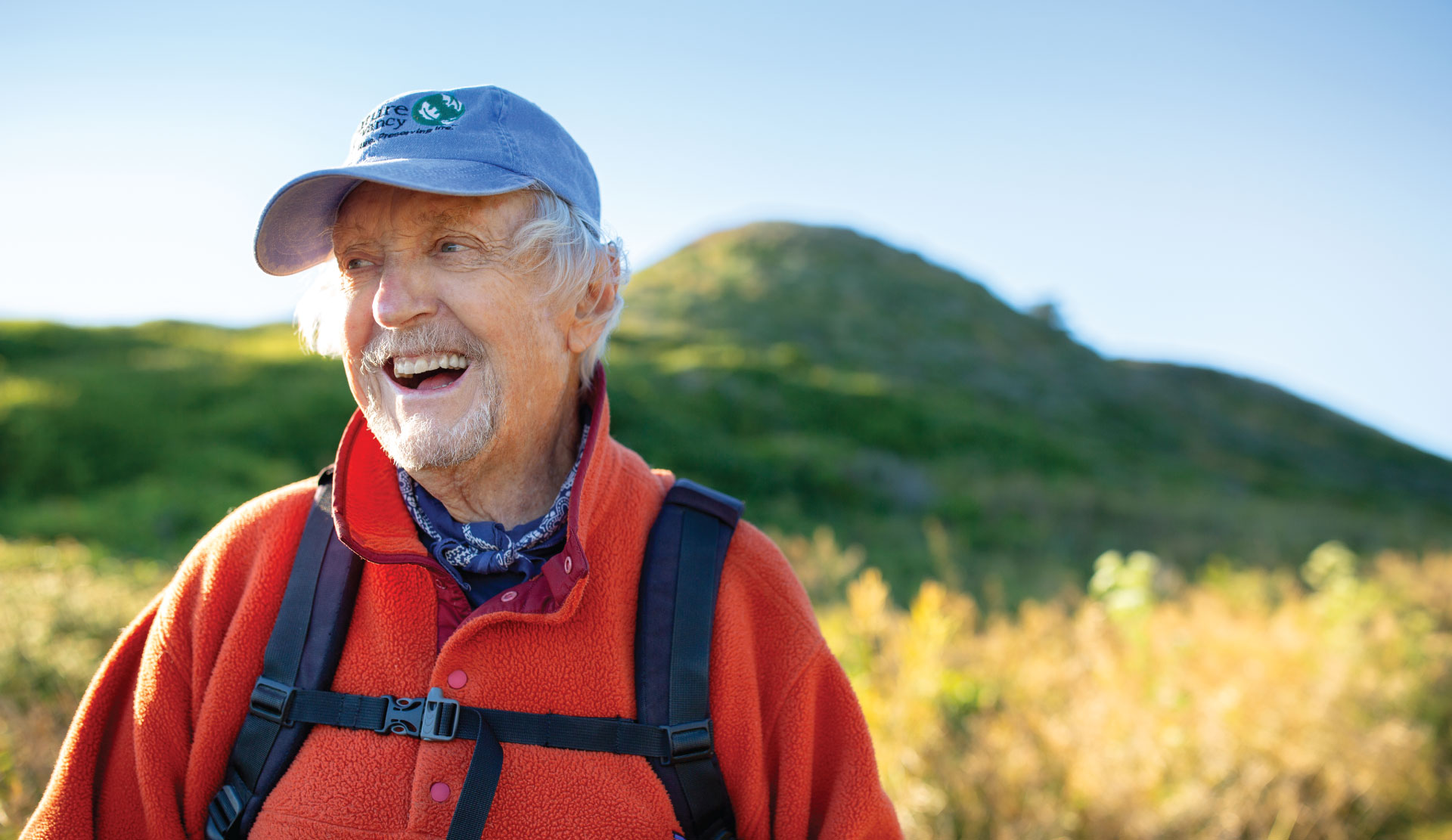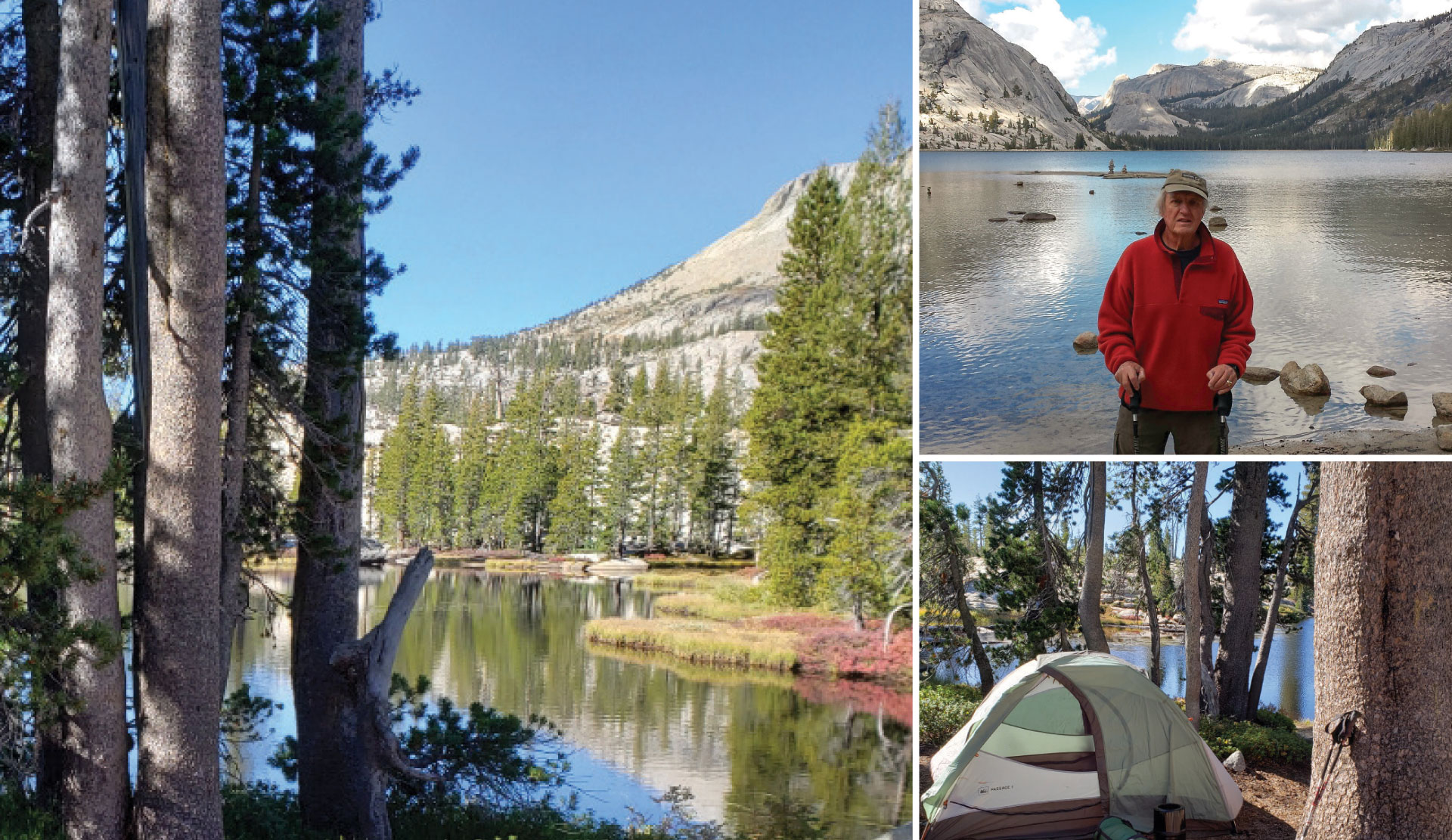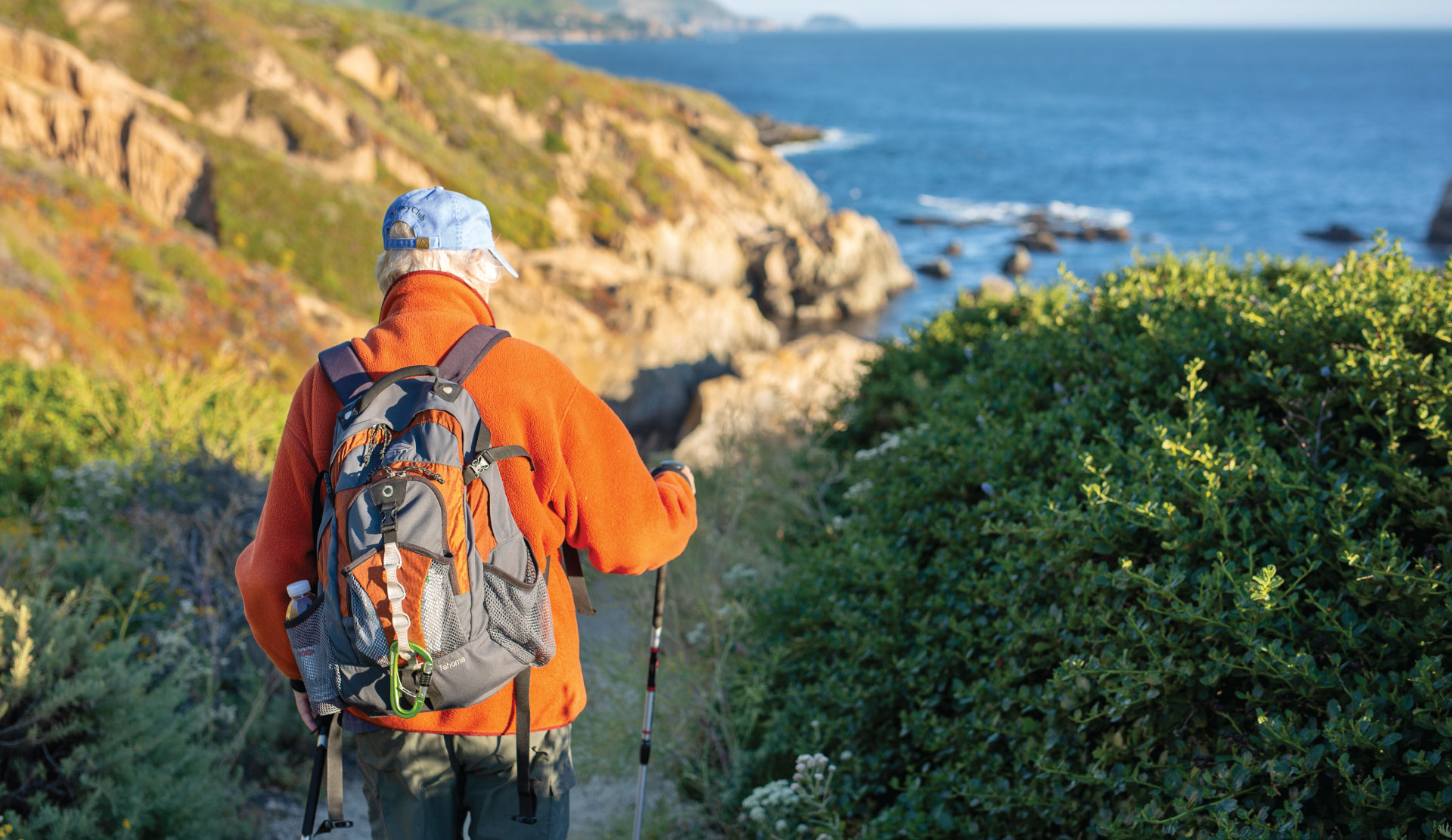
Climbing mountains after cancer — with support from survivorship series
Robert Lea has been backpacking since high school, his affinity for the natural world leading him through much of the Sierra Nevada and, especially, Yosemite.
Now 81, Lea thought his treks might be behind him after a bout with prostate cancer curbed his active schedule and sapped his energy.
“I had to have a biopsy, diagnosis, and a new treatment called SpaceOAR,” he says, “which has to do with protecting organs at risk during the radiation treatment that followed. I lost a year of my active life, waiting for and going through three months of radiation treatment, five days a week, followed by six months of recovery. It was like a job, and I took it seriously.”
During his cancer treatment, Lea couldn’t go hiking or engage in another favorite pastime, scuba diving.
“I was tired, and knew I’d lost physical conditioning,” he says. “I didn’t know if I could scuba dive again or if I still had a passion for hiking. I had no idea what I would be able to do after all of this was over.”
"With Joy’s encouragement, I started to hike, to swim, and take my dog on longer walks. At first, it was slow, but I got better."
— Robert Lea, cancer survivor

Photos courtesy of Robert Lea: Yosemite, California
His treatment team at Community Hospital of the Monterey Peninsula suggested a prescription: Enroll in Live Longer. Live Stronger, a weekly, eight-session class for cancer survivors. The series is for anyone who has had a cancer diagnosis, designed to get them on a path to wellness and well-being. Led by Joy Smith, a registered nurse and oncology educator, the interactive, motivational class covers emotional health, exercise, nutrition, and all-around survivorship.
“With Joy’s encouragement, I started to hike, to swim, and take my dog on longer walks” Lea says. “At first, it was slow, but I got better.”
At the end of the series, participants set goals. Lea’s was clear: He wanted to backpack from Yosemite’s Tuolumne Meadows.
On October 9, 2019, Lea and his friend, semi-retired urologist Dr. Brickley Sweet, set off. Carrying 35-pound
packs, they hiked two miles up to May Lake, reaching an elevation of 9,330 feet, then dropping down 2 miles to Raisin Lake at 8,500 feet. After camping two nights, they hiked back to the trailhead and drove down into Yosemite’s Curry Village for an exceptional dinner at the Mountain Room and a night in a tent cabin.
Afterward, Lea visited Joy Smith, proudly sharing photographic evidence that one of his goals had been achieved.
The octogenarian spends as much time as possible in the outdoors and continues to publish documents and scientific journal papers. He left his job as a research biologist with the California Department of Fish and Game a decade ago, but he doesn’t call it retirement. Scientists, he says, never really retire.

Robert Lea hiking at Soberanes Point
He earned a master’s degree in zoology at University of California, Berkeley, after graduating with a bachelor’s degree in the same field from the University of Idaho. After a semester at sea with Stanford University’s TeVega oceanography program, he decided to switch his field of study to marine biology. Working in his field for several years he was offered a Maytag Fellowship from University of Miami, receiving a doctorate in marine sciences.
His career with Fish and Game spanned 37 years, taking him to Monterey where he and his wife Susan raised two children, Sabrina and Graham.
“When working, I tried to take trips in the Sierra as often as possible,” says Lea. “When you’re young, active, and fit you can go on seven-day trips, carrying 70 pounds. I’ve always appreciated how enjoyable it is to be outside and communicate with the natural world.”
Today, he hikes weekly in Toro Park or other local venues, and has no intention of giving up backpacking, scuba diving, climbing, or marine biology.
He’s planning a diving trip in the Sea of Cortez. “I have to train for that,” he says, “but I’ll be ready. You’ve got to keep doing the things you really like, so you still can.”
"With SpaceOAR, we are able to place a protective gel between the prostate and the rectum before radiation therapy to prevent some of the potential side effects when treating prostate cancer. The procedure is done in the office in about 30 minutes, and most patients experience minimal discomfort, comparing it to a prostate biopsy. It has been a game-changer for our patients."
— Dr. Craig Stauffer, urologist, Montage Medical Group
What is SpaceOAR™ Hydrogel?
As part of his prostate cancer treatment, Robert Lea’s urologist recommended the use of SpaceOAR hydrogel to help minimize side effects of radiation therapy.
The gel is injected between the prostate and rectum to act as a spacer, decreasing rectal injury from radiation. Patients don’t usually feel the gel, which remains in place for about three months before it is absorbed and leaves the body in the patient’s urine.
Learn more about the urology expertise at Montage Medical Group.
LIVE LONGER. LIVE STRONGER. SURVIVORSHIP SERIES
Finishing cancer treatment is a major milestone — and so is the next step toward long-term, healthy survivorship. Community Hospital’s Comprehensive Cancer Center, in partnership with Montage Wellness Center, offers this interactive, motivational series of classes that teach strategies to help you live longer and stronger after a cancer diagnosis and treatment. In-person classes are on hold. An online version is in development.
TOPICS
- Get back to wellness
- Customized exercise for wellness
- Medical management beyond cancer
- Nutrition beyond cancer
- Emotional health and well-being
- Survivorship care planning

